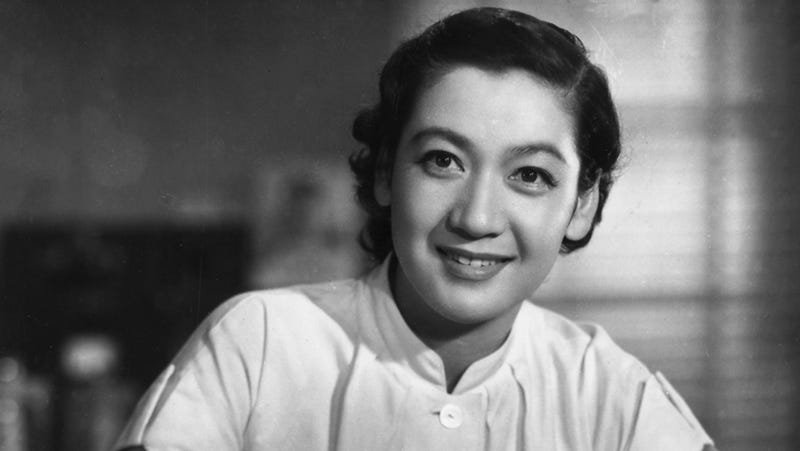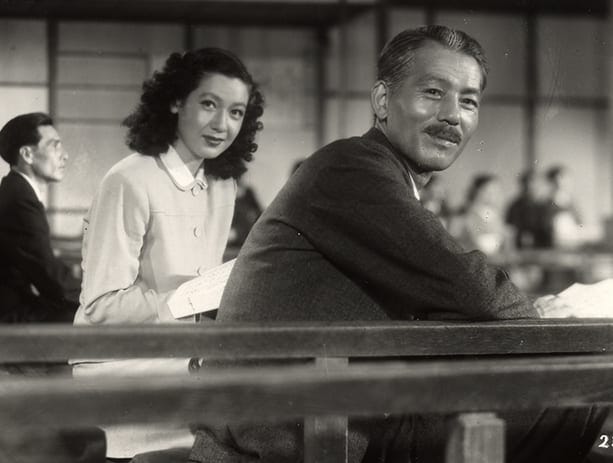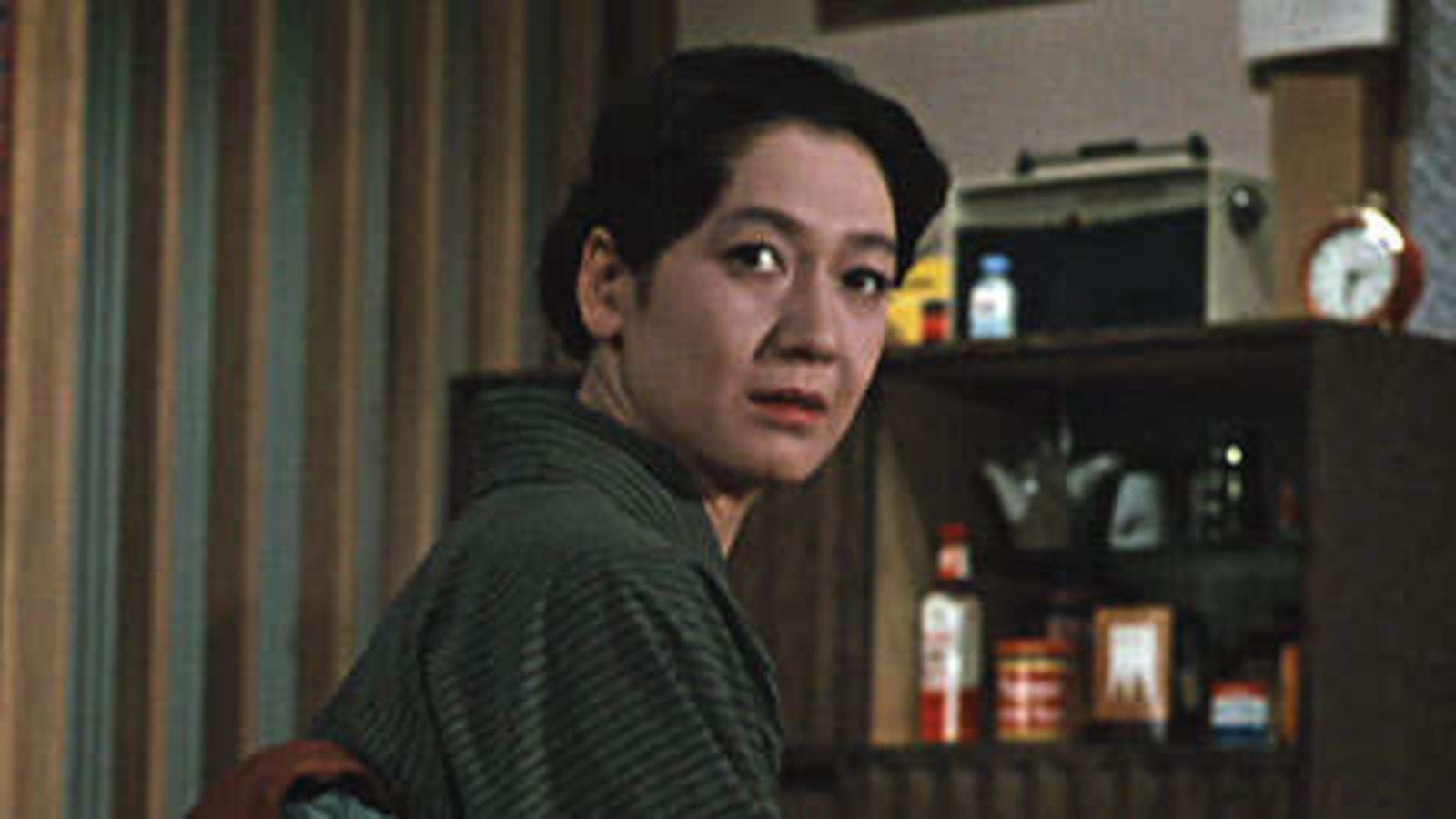Happy Setsuko Hara Day
The iconic Japanese actress is celebrated on Turner Classic Movies August 19th.

Every August, the Turner Classic Movies channel features a “Summer Under the Stars” festival where each day is devoted to a particular performer. It’s a fun conceit: 24-hour programming blocks dedicated to James Cagney, Bette Davis, Katharine Hepburn, etc. Thursday, August 19, offers something special: Eleven movies starring Setsuko Hara, the radiant enigma of post-war Japanese cinema.

The line-up includes what’s generally considered one of the greatest films of all time, “Tokyo Story” (1953), and it also has one of my favorite films of all time, the luminescent “Late Spring” (1949). Set your DVR for those two at least, but know that the four other movies she made with her cinematic soulmate, director Yasujiro Ozu, are also on hand, as are the two that Hara made with Akira Kurosawa and the two she made with the incisive, lesser-known melodramatist Mikio Naruse. Of the eleven films, only Keisuke Kinoshita’s comparably lightweight “Here’s to the Young Lady” (1949) is skippable, and the Ozus are a must. (All eleven are also available for streaming on the Criterion Channel, and “Tokyo Story” and “Late Spring” can be streamed on HBO Max and rented on Amazon and other platforms.)
Hara was dubbed “the Eternal Virgin” by the Japanese press, a moniker that reflects her cultural appeal at the time but still misrepresents her complicated persona and subtle gifts. Like the silent icon Lillian Gish, Hara’s one of the few genuine movie exponents of goodness, in a way that’s profound and empathetic instead of sentimental or sappy. (Is there a similar arbiter of unironic kindness on the pop-culture scene today? Or have we snarked it out of existence? Discuss.) Yet for all the polite smiles her characters show to the outside world, we never stop sensing the turmoil within, and in her Ozu films there usually comes a moment when a Hara woman’s scrupulously maintained social façade drops away and she bares her heart with an emotional wallop unlike anything else in the movies.

“Late Spring” has one of the most powerful examples. Her character, Noriko, has been living comfortably for years with her widowed father (Ozu regular Chishu Ryu); she’s in her late twenties, verging on an old maid in late 1940s Japan, but content to keep house for him. Her life, in fact, is exactly where she wants it, and Hara conveys a quiet but deeply rooted satisfaction beneath Noriko’s placid exterior.
But the girl should be married off, say the nosy neighbors, and her father, absent-minded and loving, eventually agrees. Suitors are submitted; Noriko’s not interested. The father pretends that he’s taking on a new wife so that the daughter will get the hint and move on, and “Late Spring” rolls gently up to a sequence that seems to come out of nowhere, in which this pliant, dutiful daughter asks with a simplicity near tears why she should be happy in theory somewhere else when she’s already happy now, right here. The moment is doubly heartbreaking, because we glimpse through the window of one woman’s sorrow the sadness of life itself – the way its currents inexorably carry us away from those we love. Ozu, as ever, neither celebrates nor condemns. He only contemplates, letting these small domestic disappointments become fractals of a much larger mystery, the one that comes with being human.
The director’s greatest films all carry similar “seasonal” titles – “Early Summer,” “Late Autumn,” “Tokyo Twilight” – and they feature a repertory cast playing variations on his themes of generational rifts, filial and societal obligations versus personal happiness, and time’s merciless passing. But to think they’re identical is to miss the point. Ozu kept making the same movie the way Monet kept painting the same cathedral: With each fresh gaze, the thing is as it was before yet infinitely, beautifully different. Some of the variations, like “Tokyo Twilight,” are bleak. “Ohayo” (“Good Morning,” 1959) is one of the funniest movies I’ve ever seen. “Late Spring” just feels like life itself.

By “Late Autumn,” in 1960, Hara was playing the parental role in a looser, more mischievous reworking of “Late Spring.” It was one of her final movies. She appeared in one more for Ozu (“The End of Summer,” 1961) and then, after the director’s 1963 death from cancer, she closed up shop at the age of 42 and never appeared in another film. Much has been speculated about their personal relationship, most of it spurious; it’s likely Ozu was gay. Hara lived quietly for another half century, never marrying and maintaining a studious, Garboesque distance from the public and the press. It was as if she had willed herself invisible after decades of putting all those concatenated feelings on display. She died in 2015 at the age of 95. That ambiguous smile, caught between duty and desire, lingers on.
If you enjoyed this edition of Ty Burr’s Watch List, please feel free to share it with friends.
Or subscribe. Thank you!





